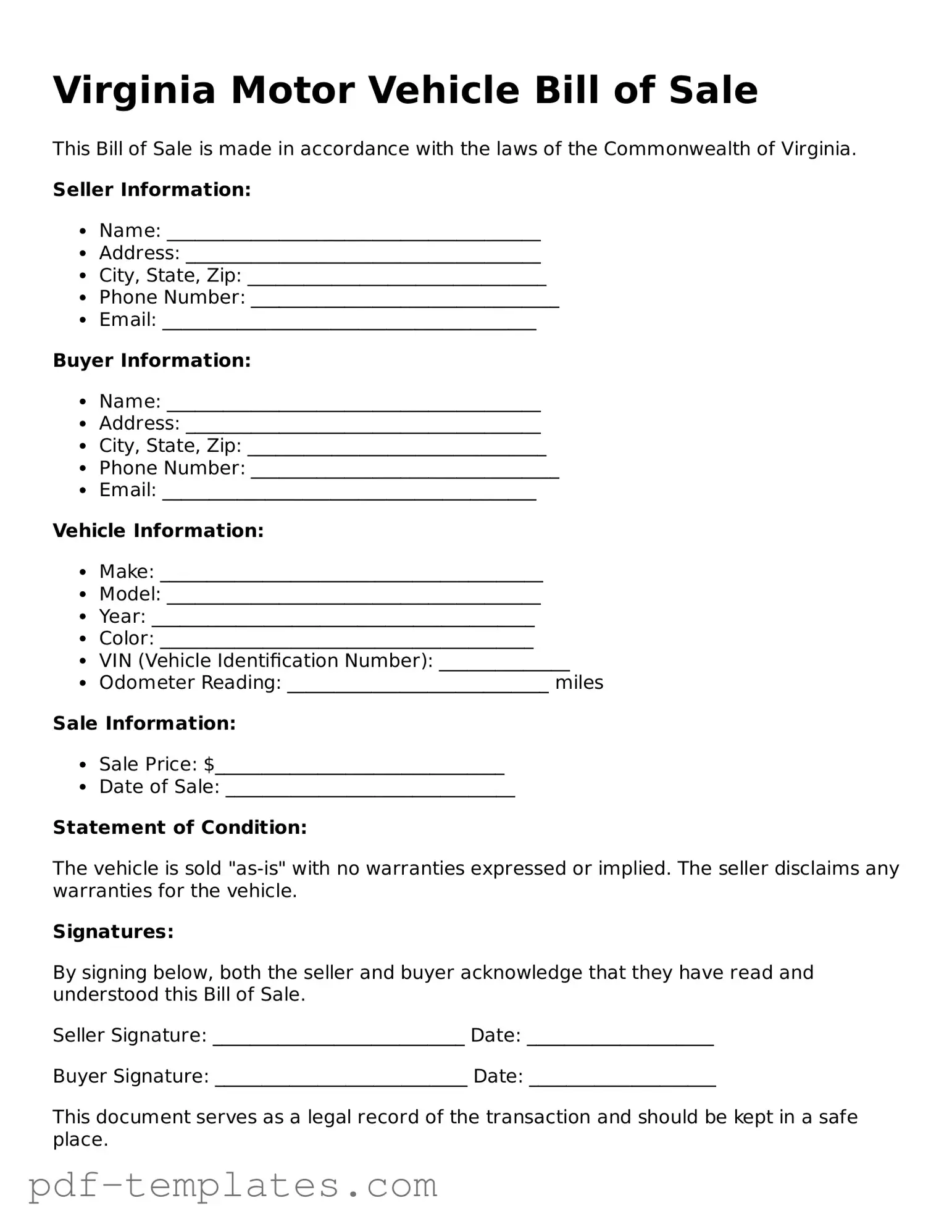The Virginia Motor Vehicle Bill of Sale form is similar to the General Bill of Sale. Both documents serve as proof of a transaction between a buyer and a seller. They detail the item being sold, the purchase price, and the parties involved. While the General Bill of Sale can apply to various items, including personal property and vehicles, it shares the same purpose of documenting the transfer of ownership, which is crucial for legal and tax purposes.
Another document that closely resembles the Virginia Motor Vehicle Bill of Sale is the Vehicle Title Transfer. This form is essential when ownership of a vehicle changes hands. It typically includes information about the vehicle, such as its VIN, make, and model, along with the names of the buyer and seller. While the Bill of Sale serves as a receipt for the transaction, the title transfer is often required by the state to officially record the new ownership.
The Odometer Disclosure Statement is another important document related to vehicle sales. This form is used to verify the mileage on a vehicle at the time of sale. It protects buyers from odometer fraud. Like the Bill of Sale, it requires signatures from both parties and is often a legal requirement when transferring ownership of a vehicle. Ensuring accurate mileage disclosure helps maintain transparency in the sale process.
The Purchase Agreement is also similar in function to the Virginia Motor Vehicle Bill of Sale. This document outlines the terms and conditions of the sale, including payment details, delivery expectations, and any warranties. It formalizes the agreement between the buyer and seller. While the Bill of Sale serves as a simple receipt, the Purchase Agreement provides a more detailed framework for the transaction, which can help prevent misunderstandings.
The Vehicle Registration Application is another related document. After purchasing a vehicle, the new owner must register it with the state. This application collects information about the vehicle and the owner. While it does not serve as proof of sale, it is a necessary step following the completion of a sale. The Bill of Sale often accompanies this application as evidence of ownership when registering the vehicle.
The Affidavit of Vehicle Ownership can also be compared to the Virginia Motor Vehicle Bill of Sale. This document is used when a buyer cannot obtain a title from the seller, perhaps due to a lost title. The affidavit allows the buyer to claim ownership based on the sale. It provides a legal statement that can help facilitate the registration process, similar to how the Bill of Sale documents the transaction itself.
Lastly, the Release of Liability form is relevant in the context of vehicle sales. This document protects the seller from future claims or liabilities related to the vehicle once the sale is complete. It confirms that the seller is no longer responsible for the vehicle after the sale date. While the Bill of Sale focuses on the transfer of ownership, the Release of Liability ensures that the seller's obligations are officially terminated.
